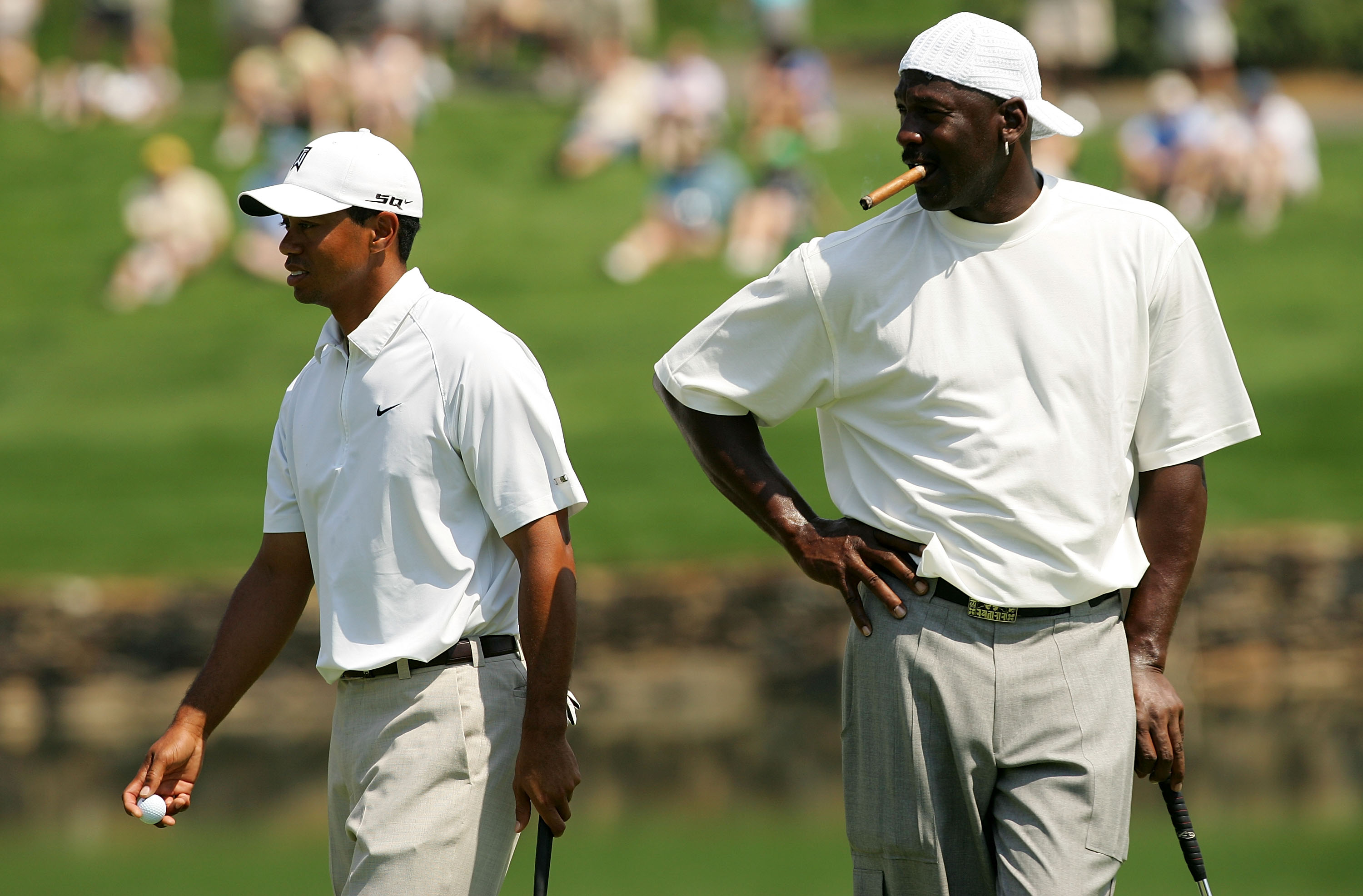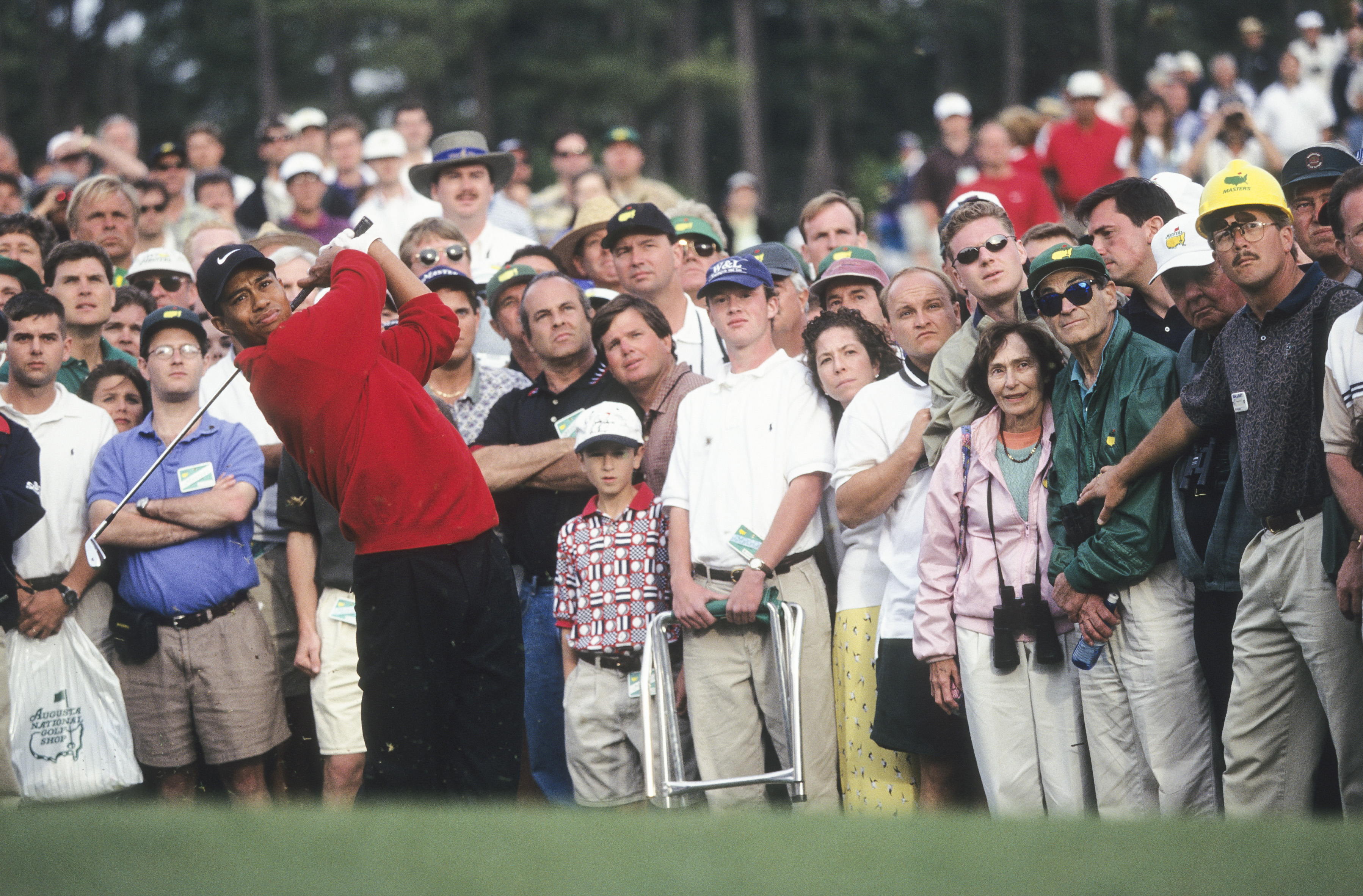Everything

From the minute Tiger Woods began to transcend golf the way Michael Jordan once did to basketball, comparisons between the two men have been hard to avoid.
Now with the release of warts-and-all documentary series Tiger on HBO Max (available on Binge in Australia), the two men find themselves competing once more. In the past twelve months, The Last Dance has been arguably the most talked-about TV series in the world. A global audience tuned in to relive Michael Jordan’s career, with The Last Dance becoming a zeitgeist series that spawned a new appreciation for His Airness.
The two-part Tiger series aims to achieve that same watercooler status by different means. Where The Last Dance was the story of Michael Jordan, as told by Michael Jordan, Tiger is the rise, fall and rise again, of Tiger Woods, told by everyone but Tiger.
That being said, the first few minutes of Tiger feel eerily familiar Through a series of grainy home videos we’re introduced to a child prodigy who is determined to conquer the world.
This one-of-a-kind talent goes on to shatter records, blowing away all the competition before him and transcending the sport. Sponsors throw themselves at the young black athlete, desperate to be associated with their obvious greatness.
We’ve seen this before, haven’t we?
The resemblance between the two sports documentaries is no mere coincidence, but the question remains: is HBO’s Tiger Woods documentary better than The Last Dance?
Tiger is literally the Michael Jordan of Golf in terms of competitiveness and desire to win. So good
— Dlund87 (@Dlund87) January 13, 2021
Similarities: A tale of two GOATS
Tiger is at it’s strongest when contextualising how the only child of an African American Army officer father and a Thai mother conquered the whitest sport in the world.
The first part of the documentary charts Tiger’s rise from child prodigy to a ruthless competitor, culminating in his famous win at the U.S. Masters at Augusta in 1997 with a record score. At age 21, he became the youngest man and the first African American to earn the title and thrust Woods into the global spotlight.

Similarly, The Last Dance is careful to colour in Jordan’s backstory, including his transition from college superstar to NBA rookie.
Both series also highlights the complicated relationship the respective athletes had with their fathers. Tiger goes to extreme lengths to reinforce that Tiger’s father Earl was responsible for moulding the early part of his son’s career. Often referred to as ‘best friends’ it’s clear that Tiger and Earl were inseparable, but as the business of being Tiger Woods became more intense, the relationship deteriorated.
The Last Dance delivers family tragedy more tangibly, with Jordan opening up about how the murder of his father in 1993 spurred his switch to baseball.
Like Jordan, Woods was also fiercely competitive, and both documentaries explore how that trait was simultaneously their making and undoing.
Really dug the two-part Tiger Woods doc on HBO. A good contrast to The Last Dance in showing what an unauthorized documentary can do. Their win-at-all-costs pathologies overlap plenty, but the Woods doc is more upfront about it.
— Scott Tobias (@scott_tobias) January 16, 2021
Differences: The element of control
If there is one thing we all learnt from The Last Dance, it’s that Michael Jordan likes to be in control. On the court, off the court, in the boardroom; Jordan is judge, jury and executioner.
Unsurprising then that Jordan drove The Last Dance. Every historical event, incident or flashpoint was framed by Jordan’s point of view. The clashes with Horace Grant, Isiah Thomas or Jerry Krautz; Jordan gets the final word.
Initially, the plan was for Jordan not to be included, but ESPN quickly scuppered that idea, and eventually, Jordan relented. The result was hours of endless first-person interviews, and while many believed this robbed The Last Dance of objectivity, it’s worth it to hear from the man himself.
Unfortunately for Tiger, the two-part series desperately misses the personal insight of its protagonist. Woods is famously private, even more so than Jordan, and he refused to cooperate when approached by the directors Matthew Hamachek and Matthew Heineman. Woods also ensured anyone in his immediate family was off-limits.
Instead, Tiger relies on interviews with former friends and colleagues, his long-time caddy Steve Williams appears, and there is also plenty of archival footage. But the absence of Woods himself is hard to ignore and ultimately robs Tiger of credibility.
Sex sells
The bait that makes Tiger worth tuning in for is the chance to relive and re-examine his spectacular fall from grace. Never in the history of modern sport has there been a more high profile self-combustion than Tiger Woods following the revelation of his extra-marital affairs in 2009.
After the National Enquirer published a story that claimed Woods was seeing multiple other women Woods perfectly curated world imploded.
People are saying that the Tiger Woods doc on HBO is scandalous mud-slinging. Sorry it’s not The Last Dance. Tiger didn’t have final cut like Jordan did. This makes a better doc. I’m glued. This is the whole story. The controversy and the athletic greatness. Can’t wait for part 2
— cragglerock🌭🦞 (@craggum) January 14, 2021
Elin Nordegren promptly filed for divorce, and the scandal dogged Woods for years costing him billions in endorsements and leaving his reputation in tatters. The now-infamous ‘apology’ press conference remains one of the most-watched mea culpas in sports history.

Tiger doesn’t shy away from the downfall. Instead, it does the opposite. Wood’s most well-known mistress Rachel Uchitel is interviewed for the first time, in the second instalment.
Worth a watch?
Short answer, yes. Long answer, still yes, but Tiger feels like a missed opportunity.
Had Woods agreed to contribute to the series and allowed for The Last Dance style-treatment of his story, then perhaps his legacy would’ve been improved, rather than tarnished. Instead, the filmmakers are forced to stitch together a narrative from periphery figures while using the easy targets – sex and scandal – as tentpoles.
The result is a snapshot of a phenomenal sports star that leans heavily on the salacious details, without ever letting you feel too close to the subject.